UK-based artist and designer Jacqueline de la Fuente was inspired to start making sculptural vases from waste paper and cardboard when she had children – from noticing the increase in waste her family now generated, through experimenting with papier-mâché alongside them, and through wanting to leave them the legacy of a healthier planet on which to grow up. Through her studio, De La Jardin, she now hand-makes eye-catching decorative objects which are sought-after by interior designers and private collectors alike. We spoke to Jacqueline to find out more.
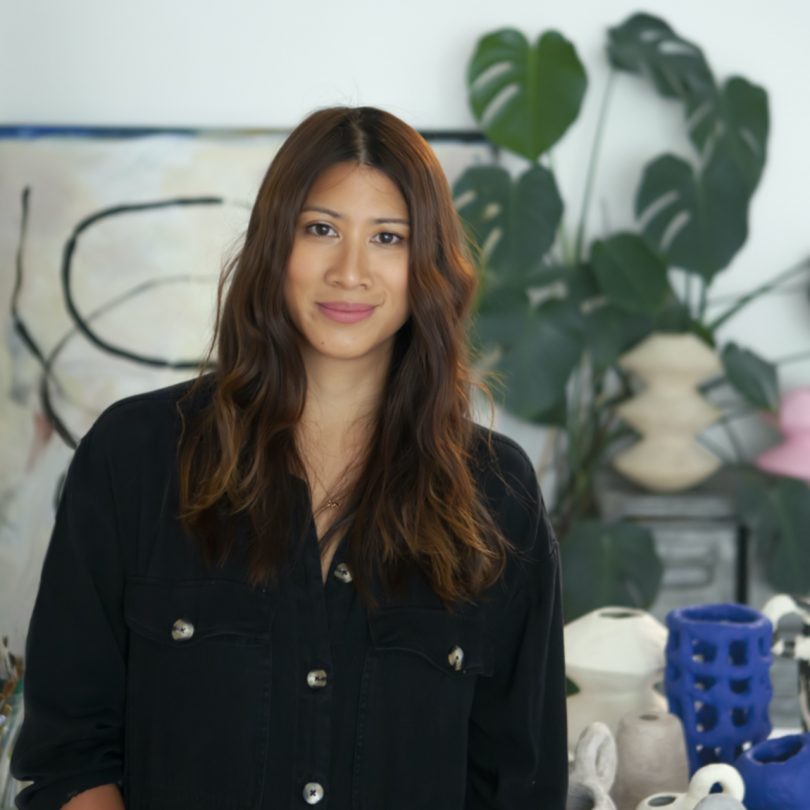
Jacqueline de la Fuente
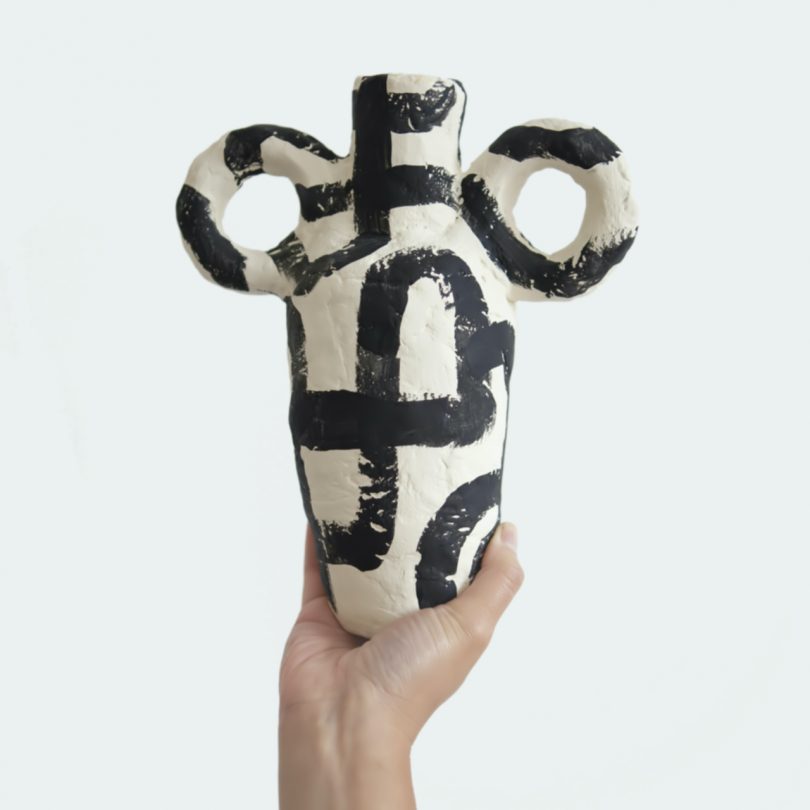
Tell me a little bit about your childhood, education and background in terms of how you first became interested in creativity, design and sustainability.
I was born in England, Surrey but my parents are both from the Philippines and came over to study nursing in the 1970s. When I was eight years old my parents decided to move us to the Philippines where we lived for two years. Growing up I preferred being outdoors than drawing, but discovered my creative streak when it came to my art lessons – I was always doing more than was asked, pushing the boundaries, but not really noticing it at the time. Having lived in both countries I was aware of how different they were from a young age. We lived comfortably in both places, but in the Philippines, I was much more aware of the pollution and how the poorer areas suffered environmentally. I guess this has subconsciously stuck with me. Moving back to the UK, I went on to pursue interior design on a foundation course but without any planning, I fell into textile design. I went onto Winchester School of Art where I specialized in weave design – again without any real planning! This gave me an understanding of how fabric was made and the labour involved. After graduating I decided to travel to Australia where I ended up working as a weave and print designer. I then travelled to the weaving mills in China, and that was a definite moment where I became aware of the impact the textile industry was having on the environment – how the dyes were disposed of and the process the yarns would go through.
How would you describe your work?
My work is designed to turn discarded unwanted paper into artful decorative, ornamental pieces for people to enjoy and have in their home. My vases and sculptures are hand-sculpted, using paper and card waste which is turned into a paper clay. Each vase or sculpture I make is a piece of art to be treasured. At the same time, they have an organic feel to them with the combination of structure and boldness.
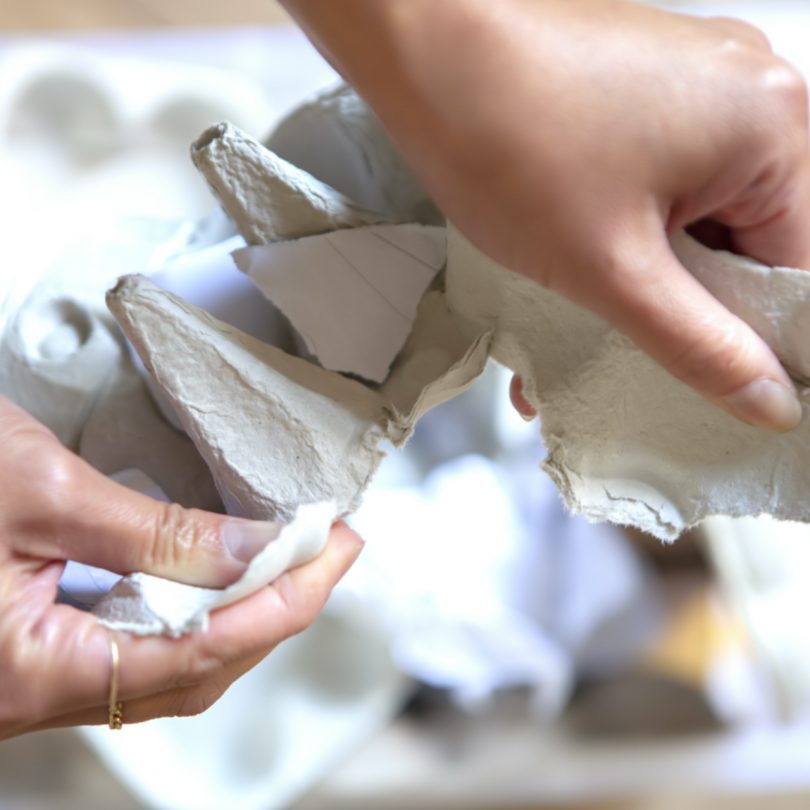
What inspired this project?
My passion for ceramics, objects, sculptures and vases initially inspired this project. Being a full-time mum to two young kids meant going to a ceramics studio wasn’t easily accessible for me. At the same time, having a family made me aware of how much we throw away such as packaging of kids’ toys, cereal boxes, letters, egg cartons… One day after researching papier-mâché for my kids, I came across a lady who was making theatre props out of ‘paper clay’. Her version was more like a soft paste that you had to use over chicken wire for structure and she was using tissue instead of paper. This instantly clicked with me and inspired me to think about how I could use our paper and card waste and turn it into clay. It dawned on me just how very little we pay attention to these materials and I was curious to see if I could prolong their use by changing their form and aesthetic.
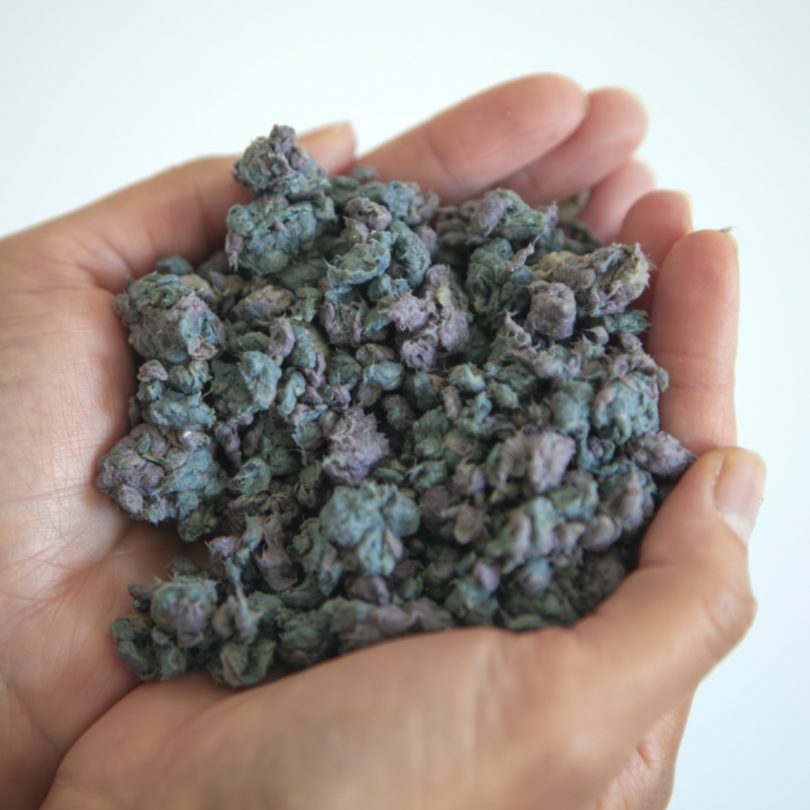
What waste (and other) materials are you using, how did you select those particular materials and how do you source them?
I source paper and card waste from local cafes, shops and what we throw away in our own home. This is from packaging, letters, newspapers, egg cartons – all of which are discarded almost instantly after their short use. To make the clay, I turn these into paper pulp and mix them with flour, adhesive and a small amount of joint compound so very similar to papier-mâché. I like the idea that these materials go through less of a process than normal recycling. Very little energy apart from my own is used to turn waste paper into a new aesthetic.
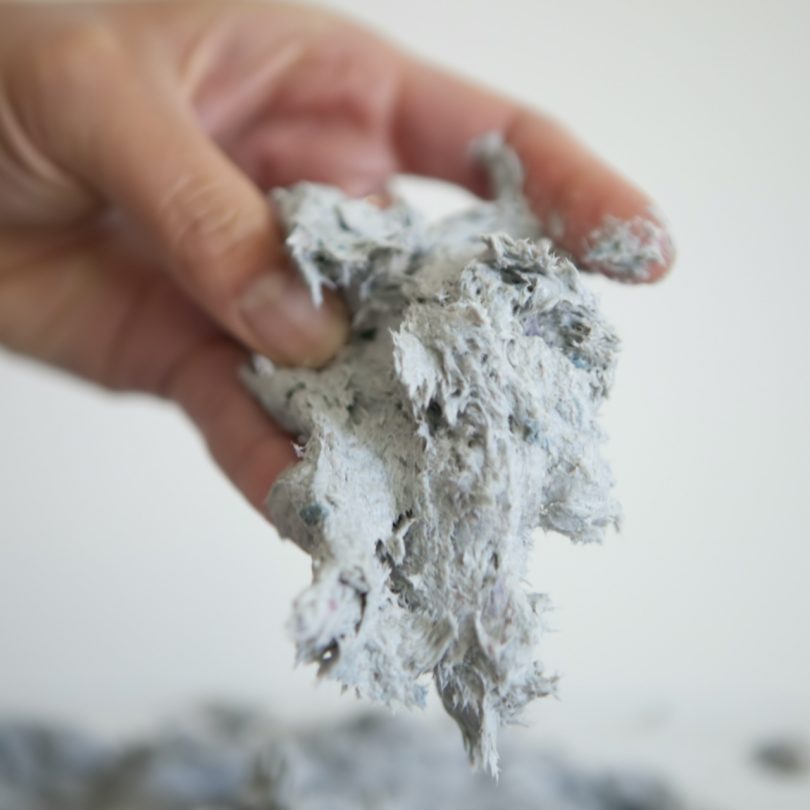
When did you first become interested in using waste as raw material and what motivated this decision?
As much as working in the design industry made me aware of the materials we use and the processes that create waste, it is becoming a mum that has given me the motivation. From food waste to items the kids grow out off or no longer want to play with, the realization of just how much we end up taking to the charity shops, selling on eBay or throwing away became overwhelming and I felt I had to do something about it.
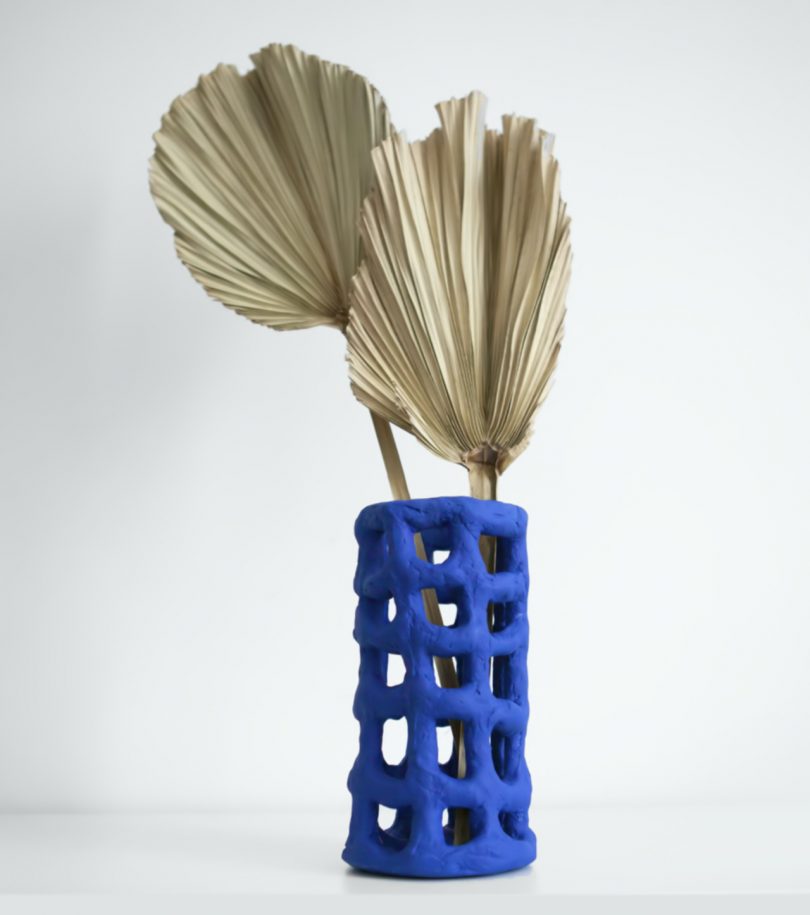
What processes do the materials have to undergo to become the finished product?
To make the paper clay, I first shred the card and paper by hand. This is then soaked in water until it’s softened enough to blend it, turning into paper pulp. To hold the paper pulp together, I mix in a small amount of adhesive, joint compound and flour to the pulp which makes it into a sturdier malleable clay. The process uses very little water and hardly any clay goes to waste. I can pretty much start making it into a shape straight away. Unlike normal clay, each part of the object needs to be made individually as it’s still quite soft. I sometimes use glass jars or recycled objects I have at home to help start off a shape or base and then use my hands to organically build up the desired shape I have in mind. By adapting the recipe and using paper and card instead of tissue for the clay, it makes it more malleable and easier to mold into shape. Some of my vases are left naturally or I paint them with water-based paint which are from sustainable companies.
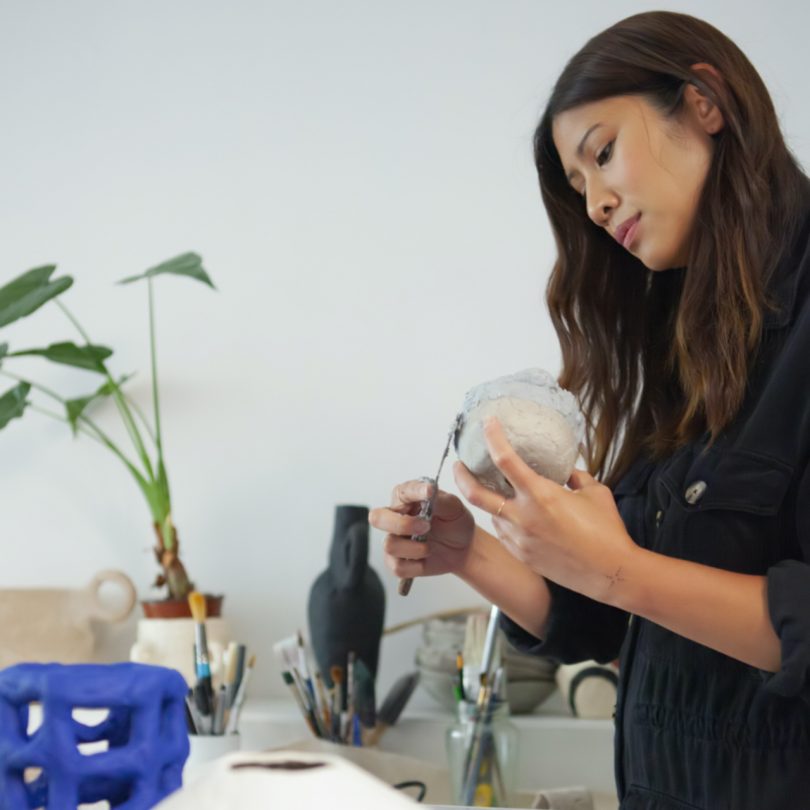
What happens to your products at the end of their life – can they go back into the circular economy?
If I’m honest my vases have not got to the stage yet of being discarded so I don’t know how well they break down. As they are not watertight, I am sure that by wetting them again, the material would turn back into clay but it won’t go back to its original material or paper again.
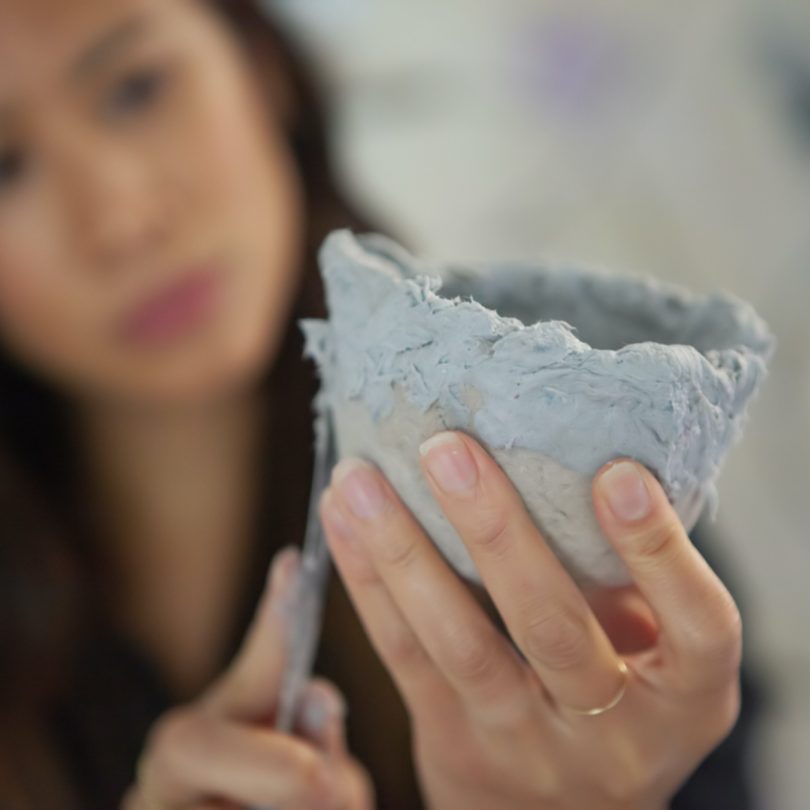
How did you feel the first time you saw the transformation from waste material to product/prototype?
Seeing the vases I made for the first time was very exciting and I was amazed that I had created a product that was very similar to ceramics in terms of how it looks and feels in the hand.
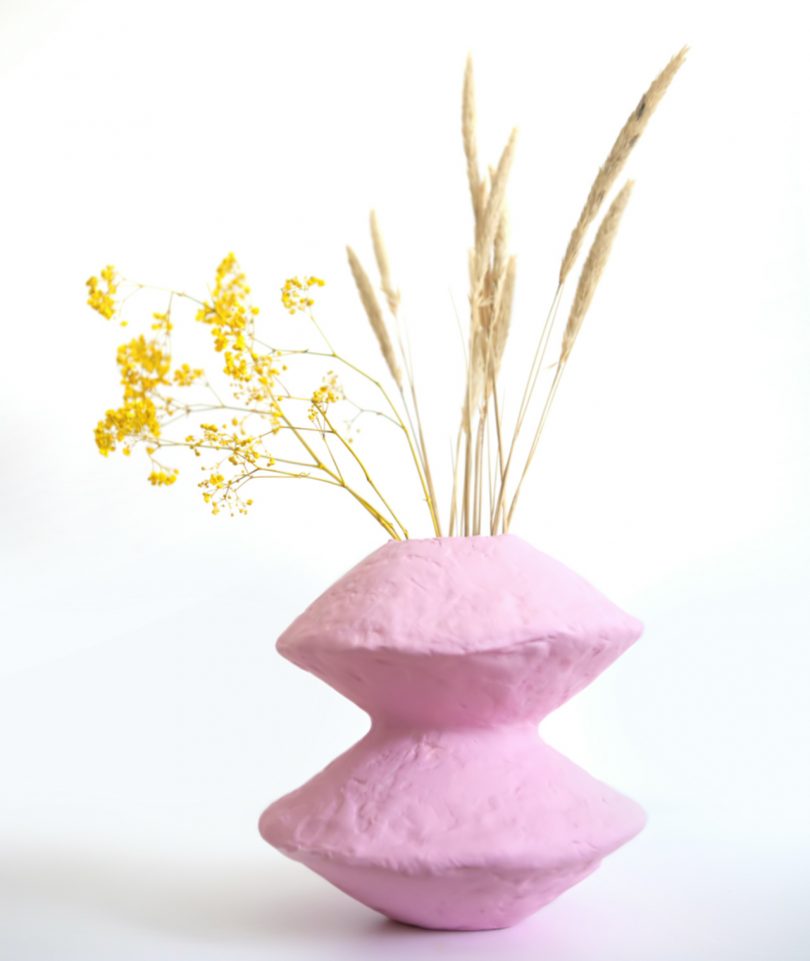
How have people reacted to this project?
When I first made my vases it took a while for me to share them as I was hesitant about whether people would understand why I was using paper and card waste to make decorative objects for interiors and home – I was also worried that the materials I was using would cheapen them, even though the craftsmanship is the same when working with hand-building clay. The moment I shared them on social media, I had the most amazing response. The first (and only!) three vases I had made sold instantly and from there I started getting orders and interest from all sorts of people even the amazing interior design duo 2LG Studio. I now have a great following and lots of interest in the process of how I make the final product. People seem to be excited to have my vases or sculptures in their home or to give them to family or friends as gifts.

How do you feel opinions towards waste as a raw material are changing?
People are more aware of sustainability, buying or sourcing locally to cut down their carbon footprints. With our current situation with climate change and COVID-19, I think people are becoming more aware of waste and reusing what they can, buying less and making more considered purchases. By looking at how things are made and materials, people are more positive and accepting towards waste being used in products or as a new material.

What do you think the future holds for waste as a raw material?
As our resources dwindle and people become more aware of waste and the impact on the environment, recycling discarded waste into innovative materials is the way forward. We can see it now in the various creative industries that are beginning to do this, for example, plastic bottles made into handbags or into tables and chairs. They are so many exciting new products out there made purely from recycled waste. I hope this can continue in other areas.
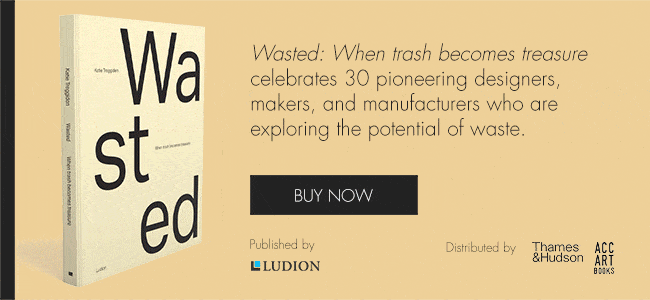

Katie Treggiden is a purpose-driven journalist, author and, podcaster championing a circular approach to design – because Planet Earth needs better stories. She is also the founder and director of Making Design Circular, a program and membership community for designer-makers who want to join the circular economy. With 20 years’ experience in the creative industries, she regularly contributes to publications such as The Guardian, Crafts Magazine and Monocle24 – as well as being Editor at Large for Design Milk. She is currently exploring the question ‘can craft save the world?’ through an emerging body of work that includes her fifth book, Wasted: When Trash Becomes Treasure (Ludion, 2020), and a podcast, Circular with Katie Treggiden.
You can follow Katie Treggiden on Twitter, Instagram, and Linkedin. Read all of Katie Treggiden’s posts.
